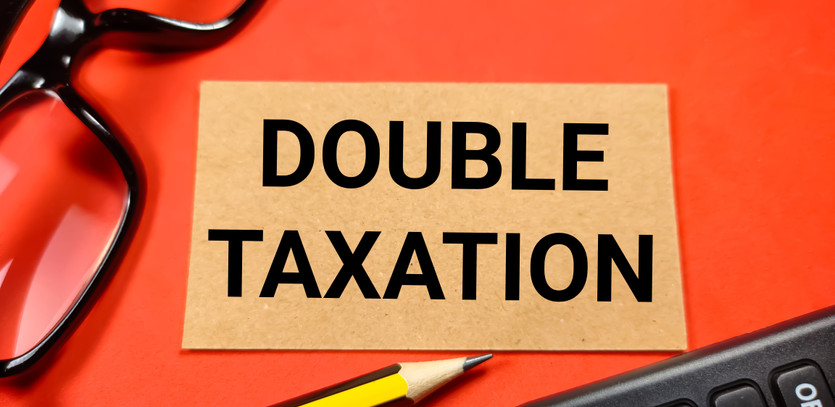Delving into the Intricacies of Double Taxation
In the intricate fiscal landscape that governs corporations and their shareholders, the term 'double taxation' emerges as a significant point of discussion, painting a picture where the same set of earnings is taxed twice. This scenario predominantly afflicts corporations and their shareholders. However, its ramifications deeply resonate in the larger business sphere, casting a significant impact on earnings and profit distributions. Understanding double taxation is pivotal, as it carries the weight of substantial financial implications for both corporations and individual shareholders. In this comprehensive guide, we delve deep to unfold the many layers of double taxation, offering you a panoramic view of its mechanisms, repercussions, and the strategies to navigate it adeptly.
Key Considerations
- Corporations and Shareholders: Standing squarely at the intersection of this issue, corporations and shareholders bear the most substantial burden, grappling with multiple tax impositions on a single income source.
- Geographical Scope: Although generally perceived as a domestic concern, double taxation can indeed transcend borders, implicating businesses in international tax obligations and generating additional complexities.
- Business Entities: Predominantly, C corporations are caught up in this taxing dilemma, finding themselves distinguished, albeit unfavorably, from other business structures that generally maneuver clear of this fiscal pitfall.
The Mechanisms of Double Taxation Explained
Understanding the mechanisms that drive double taxation is essential in comprehending its broad-reaching implications. Initially, corporations are taxed on their earnings, after which the shareholders find themselves in a secondary phase of taxation. Here, dividends and capital gains derived from the previously taxed corporate earnings are put under the microscope again, essentially getting taxed a second time.
Note:
At present, corporations find themselves subjected to a tax rate of 21%, a figure that takes a substantial slice of their earnings.
Small and emerging corporations often shy away from distributing dividends, instead preferring to reinvest their earnings back into the business to foster growth and expansion. This strategy is often seen as a route to avoid the repercussions of double taxation. Contrarily, mature corporations with lesser growth prospects might opt to distribute a part of their earnings as dividends, a gesture that reflects financial maturity and stability, despite inviting a second round of taxation.
Shareholders who also are employees of the corporation find themselves grappling with a complex situation where their earnings through salary are taxed, a practice extending to the dividends they receive, essentially drawing tax from the same pool of corporate earnings, and amplifying the effects of double taxation. To add to this, tax rates on these dividends can fluctuate, introducing a dynamic aspect to the financial landscape and requiring careful planning and strategy.
Note:
A segment of dividends, recognized as "qualified," may benefit from a potentially lower capital gains tax rate, presenting a partial relief in the taxing process.
Contrasting C Corporations with Other Business Structures
While C corporations stand as the primary recipient of the double taxation dilemma, other business entities manage to sidestep this intricate issue gracefully. S corporations, for instance, operate under partnership taxation principles, meaning the profits have a direct impact on the owners’ tax outlines, thereby averting the specter of double taxation.
Similarly, business frameworks like LLCs, partnerships, and sole proprietorships maintain a ‘pass-through’ tax ideology, where business income transitions seamlessly to the owners, meeting tax obligations directly and avoiding the complications of double taxation. This distinct separation between business and owner taxation establishes a ground for double taxation, a situation avoided by most business entities other than C corporations.
Comparative Analysis
-
C Corporations
- Encounter business level taxation, a precursor to potential double taxation
- Might channel a part of the profits for shareholder dividends, introducing a second layer of taxation
- Double taxation stands as a significant issue
-
Other Business Forms
- Sidestep the business level taxation, avoiding the initial phase of double taxation
- Profits percolate directly to the owners, creating a singular, straightforward taxation process
- A favorable taxation scenario prevails, characterized by a singular taxation on income
Double Taxation on the Global Front
As we traverse the international landscape, we find that corporations venturing beyond domestic boundaries can find themselves facing the whirlpool of international double taxation. Here, the earnings might be subjected to tax in both the generation locale and the home country, creating a complex web of fiscal obligations. Nonetheless, international cooperation through treaties and agreements often seeks to mitigate this burden, fostering a more hospitable operational environment for globally active corporations.
American expatriates and permanent residents residing overseas may find themselves under dual tax obligations — both in their residing country and the U.S. However, they can leverage provisions such as the foreign earned income exclusion to exclude a significant portion of their foreign earnings from U.S. tax, a figure that has been steadily increasing over recent tax years. Moreover, the foreign tax credit emerges as a pillar offering credits for foreign taxes levied on your income, an instrumental strategy in effectively battling double taxation.
Strategies to Navigate Double Taxation
Navigating the taxing labyrinth of double taxation demands strategic planning and an acute understanding of the prevailing tax laws. While completely avoiding tax on dividends remains elusive, there exist pathways to potentially lighten this burdensome tax load. Securing 'qualified' status for dividends, which entails adhering to specific holding periods and fulfilling other criteria, can be a decisive step toward securing more favorable tax rates.
Note:
Understanding the nuances of ‘qualified’ dividends is vital, as it necessitates a holding period adherence, coupled with expert insights from tax professionals to fully leverage the benefits.
Moreover, opting for a business structure that leans towards a 'pass-through' taxation policy can be a transformative decision. This strategy sees the net income business tax flowing directly to the owners, breaking the chains of double taxation and offering substantial fiscal relief. For expatriates, making use of foreign income exclusions and credits can offer a path to sidestep double taxation, encouraging a move towards financial prudence and stability.
Demystifying Common Queries
-
Is the double taxation paradigm justified?
- The debate around the fairness of double taxation is polarized, with substantial arguments on both sides. While some view it as an unfair practice that taxes already taxed corporate earnings, others endorse this system, arguing it prevents the stock market from becoming a tax shelter and maintaining a balanced fiscal ecosystem.
-
Can inter-state operations spur double taxation?
- Absolutely. Businesses operating across multiple states can find themselves facing double taxation, a situation exacerbated in the absence of reciprocity agreements between the states concerned. However, tax credits for levies in non-resident states can offer a financial buffer, easing the fiscal burden to some extent.





